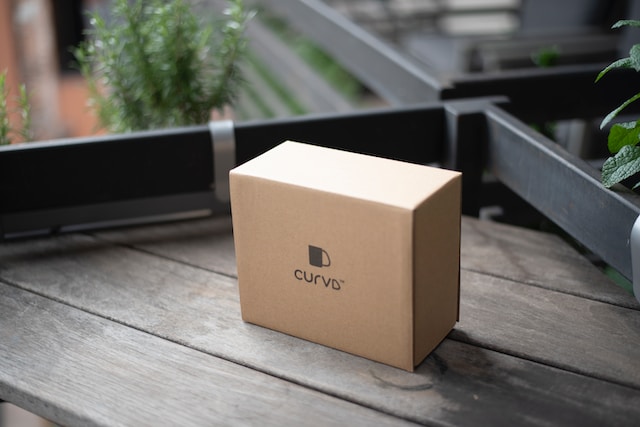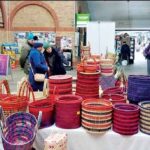
Introduction
In this rapidly evolving business landscape, staying ahead of the competition is a constant pursuit. As Sri Lankan exporters and manufacturers, you understand that packaging isn’t merely a means to encase your products; it’s a strategic asset that can make or break your success.
In this series of articles, we delve deep into the realm of corrugated boxes, a true game-changer in the world of packaging solutions. These unassuming champions have earned a well-deserved reputation for their remarkable versatility and unwavering durability. But what sets them apart, and why have they become the go-to choice for businesses worldwide?
Join us as we uncover the secrets behind the phenomenal rise of corrugated packaging. From exploring its myriad uses in safely transporting fragile items to discovering its efficiency in organizing household belongings, we’ll showcase how these boxes prove to be an indispensable solution for a wide range of applications.
Whether you’re a seasoned business owner seeking to revolutionize your product packaging or an enthusiastic entrepreneur curious about the magic of corrugated boxes, this blog is tailor-made for you. Get ready to be inspired and equipped with valuable insights that will reshape the way you perceive and utilize packaging.
Are you ready to embrace innovation and elevate your exports and manufacturing to new heights? Let’s dive into the incredible world of corrugated boxes together. Unleash the full potential of modern packaging and witness how it can empower your business like never before.
Stay tuned for exciting updates, expert tips, and real-life success stories that highlight the immense possibilities that corrugated boxes bring to your table.
Let’s embark on this transformative journey together!
What Are Corrugated Boxes?
Corrugated boxes, also known as cardboard boxes, are containers made from corrugated fiberboard. This material consists of three layers: an outer liner, an inner liner, and a fluted middle layer. The fluted layer, also called the corrugated medium, provides strength and rigidity to the box while maintaining its lightweight nature. This unique construction makes corrugated boxes ideal for shipping and storing a wide variety of products.
Corrugated boxes come in various sizes, shapes, and strengths to accommodate different items and meet specific packaging needs. They can be customized with prints, labels, and other branding elements to create a strong visual impact and enhance product presentation. Additionally, corrugated boxes are environmentally friendly as they are made from recyclable materials and can be easily disposed of or recycled after use.
Corrugated boxes find applications in a multitude of industries, including e-commerce, retail, food and beverage, pharmaceuticals, and more. They are an essential packaging solution for shipping goods, protecting fragile items, organizing inventory, and displaying products on store shelves. The versatility and cost-effectiveness of corrugated boxes have contributed to their widespread adoption across various sectors.
The Different Types of Corrugated Packaging
Corrugated packaging can be classified into different types based on various factors such as the number of walls, flute size, and board strength. Understanding these different types can help businesses and individuals choose the most suitable corrugated boxes for their specific requirements. Let’s explore some of the common types of corrugated packaging:
2.1 Single-Wall Corrugated Boxes
Single-wall corrugated boxes, as the name suggests, consist of a single layer of corrugated board. They are lightweight and commonly used for shipping and storage purposes. Single-wall boxes are suitable for relatively lighter items and provide adequate protection during transit. They are cost-effective and widely available, making them a popular choice for small businesses and individuals.
2.2 Double-Wall Corrugated Boxes
Double-wall corrugated boxes have two layers of corrugated board, providing enhanced strength and durability compared to single-wall boxes. They are capable of withstanding rough handling and can protect heavier items during transportation. Double-wall boxes are commonly used for shipping fragile or valuable goods that require extra protection. They offer superior stacking strength and are ideal for long-distance shipping or storage in warehouses.
2.3 Triple-Wall Corrugated Boxes
Triple-wall corrugated boxes are the strongest and most durable type of corrugated packaging. They consist of three layers of corrugated board, making them suitable for heavy-duty applications. Triple-wall boxes can withstand extreme conditions, such as rough handling, stacking, or long-term storage. They are commonly used for shipping large or bulky items, industrial equipment, or products that require extra protection against impact or compression.
2.4 Customized Corrugated Boxes
In addition to the standard types mentioned above, corrugated boxes can be customized to meet specific packaging needs. Customization options include size, shape, printing, and additional features such as handles, windows, or inserts. Customized corrugated boxes allow businesses to create unique packaging solutions that align with their brand identity and product requirements. They enhance product visibility, improve customer experience, and can serve as a marketing tool to attract attention and promote brand recognition.
The Versatility of Corrugated Packaging
Corrugated boxes offer a wide range of applications beyond simple shipping and storage. Their versatility makes them suitable for various purposes in both personal and professional settings. Let’s explore some of the different uses of corrugated packaging:
3.1 Shipping and Packaging
One of the primary uses of corrugated boxes is for shipping and packaging goods. They provide a protective barrier against external elements, ensuring that products reach their destination in good condition. Corrugated boxes can be customized with inserts or dividers to securely hold fragile items and prevent damage during transit. Their lightweight nature helps reduce shipping costs while maintaining product integrity.
3.2 Storage and Organization
Corrugated boxes are excellent storage solutions for both residential and commercial purposes. They can be used to organize household belongings, office supplies, or inventory in warehouses. Corrugated boxes can be stacked or labeled for easy identification and retrieval. Their strength and durability allow for long-term storage without compromising the integrity of the stored items.
3.3 Display and Presentation
Corrugated boxes are not only functional but also visually appealing. They can be customized with prints, logos, or branding elements to create eye-catching displays in retail environments. Corrugated display boxes are commonly used to showcase products on store shelves, attracting customer attention and increasing sales. Their versatility in design allows for creative and innovative product presentations.
3.4 Arts and Crafts
The lightweight and easy-to-cut nature of corrugated boxes make them a popular material for arts and crafts projects. From creating 3D sculptures to building prototypes, corrugated boxes offer endless possibilities for artistic expression. They can be painted, decorated, or transformed into unique designs, making them a favorite among DIY enthusiasts and artists.
Conclusion
Corrugated boxes have become an integral part of the modern packaging landscape. Their versatility, durability, and cost-effectiveness make them a preferred choice for businesses and individuals alike. Whether you need to ship fragile items, organize your belongings, or create visually appealing displays, corrugated packaging offers a reliable solution. By understanding the different types and applications of corrugated boxes, you can make informed decisions to meet your specific packaging needs. Embrace the world of corrugated packaging and unlock its countless benefits for your business or personal use.



